
The Enchanting Shores of Punaauia
Discover Punaauia, Tahiti - where stunning beaches, rich culture, and outdoor adventures await in the heart of French Polynesia.
Punaauia, nestled on the western coast of Tahiti in French Polynesia, is a gem waiting to be discovered by intrepid travelers. This charming neighborhood offers a stunning blend of natural beauty, cultural richness, and modern amenities, making it an ideal destination for those seeking both relaxation and adventure. One of the highlights of Punaauia is its breathtaking beaches. With soft white sand and crystal-clear turquoise waters, these beaches are perfect for sunbathing, swimming, and snorkeling. The area is also home to some of the best surfing spots in Tahiti, attracting surfers from around the world. The warm waters teem with vibrant marine life, creating a paradise for underwater enthusiasts. Aside from its natural allure, Punaauia is steeped in culture and history. Visitors can explore the Museum of Tahiti and Her Islands, where fascinating exhibits showcase the rich heritage of French Polynesia. The neighborhood’s local markets offer a delightful experience, with vendors selling everything from fresh produce to traditional crafts. This is a great place to immerse yourself in the local way of life and sample delicious Polynesian cuisine. For those who enjoy outdoor activities, Punaauia provides numerous hiking opportunities. The lush, verdant hills surrounding the area offer trails that lead to breathtaking viewpoints overlooking the Pacific Ocean. Whether you're an avid hiker or just looking for a leisurely stroll, the natural landscapes of Punaauia will not disappoint. Punaauia is also known for its warm and welcoming locals. The friendly atmosphere makes it easy for visitors to feel at home, and the neighborhood's hospitality ensures that your stay will be memorable. Whether you are looking for luxury resorts or cozy guesthouses, Punaauia has accommodations to suit every taste and budget.
Local tips in Punaauia
- Visit the Museum of Tahiti and Her Islands for an insightful look into the region’s history and culture.
- Bring reef-safe sunscreen to protect the delicate marine ecosystems while enjoying the beaches.
- Check out the local markets early in the morning for the freshest produce and handmade crafts.
- Rent a car or a scooter to explore the surrounding areas and enjoy the scenic drives along the coast.
- Be sure to try the local cuisine, especially poisson cru, a traditional Tahitian dish made with raw fish marinated in coconut milk and lime.
The Enchanting Shores of Punaauia
Punaauia, nestled on the western coast of Tahiti in French Polynesia, is a gem waiting to be discovered by intrepid travelers. This charming neighborhood offers a stunning blend of natural beauty, cultural richness, and modern amenities, making it an ideal destination for those seeking both relaxation and adventure. One of the highlights of Punaauia is its breathtaking beaches. With soft white sand and crystal-clear turquoise waters, these beaches are perfect for sunbathing, swimming, and snorkeling. The area is also home to some of the best surfing spots in Tahiti, attracting surfers from around the world. The warm waters teem with vibrant marine life, creating a paradise for underwater enthusiasts. Aside from its natural allure, Punaauia is steeped in culture and history. Visitors can explore the Museum of Tahiti and Her Islands, where fascinating exhibits showcase the rich heritage of French Polynesia. The neighborhood’s local markets offer a delightful experience, with vendors selling everything from fresh produce to traditional crafts. This is a great place to immerse yourself in the local way of life and sample delicious Polynesian cuisine. For those who enjoy outdoor activities, Punaauia provides numerous hiking opportunities. The lush, verdant hills surrounding the area offer trails that lead to breathtaking viewpoints overlooking the Pacific Ocean. Whether you're an avid hiker or just looking for a leisurely stroll, the natural landscapes of Punaauia will not disappoint. Punaauia is also known for its warm and welcoming locals. The friendly atmosphere makes it easy for visitors to feel at home, and the neighborhood's hospitality ensures that your stay will be memorable. Whether you are looking for luxury resorts or cozy guesthouses, Punaauia has accommodations to suit every taste and budget.
Iconic landmarks you can’t miss
Museum of Tahiti and The Islands
Dive into the cultural richness of Polynesia at the Museum of Tahiti and The Islands, where history and heritage come alive.

Marina Taina
Experience the best of French Polynesia at Marina Taina: a beautiful marina offering stunning views, water sports, and delicious local cuisine.

Tahiti Lagoon Paradise
Experience the enchanting beauty of Tahiti Lagoon Paradise, where crystal-clear waters and vibrant marine life create unforgettable moments in French Polynesia.
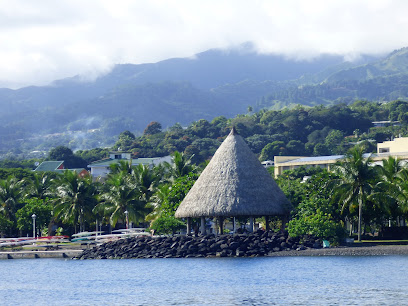
Ninamu Pearl Guesthouse Tahiti
Discover the tranquil charm of Ninamu Pearl Guesthouse in Tahiti, where stunning views and warm hospitality await every traveler.

Marae Ta'ata
Discover the sacred Marae Ta'ata in French Polynesia, where history and spirituality intertwine in a serene setting.

Mahana Park
Experience the serene beauty of Mahana Park in Puna'auia, a tranquil beach destination perfect for relaxation and outdoor fun in French Polynesia.

Parc Vaipoopoo
Explore the tranquil beauty of Parc Vaipoopoo in Puna'auia, a perfect escape for nature lovers and those seeking relaxation in French Polynesia.

Plage publique de Toaroto
Discover the serene beauty of Plage Publique de Toaroto, a perfect beach retreat in Puna'auia, French Polynesia, offering breathtaking views and endless relaxation.

Plateau vaitavere
Discover the breathtaking beauty of Plateau Vaitavere in Puna'auia, a must-visit hiking area with stunning views and serene trails in French Polynesia.
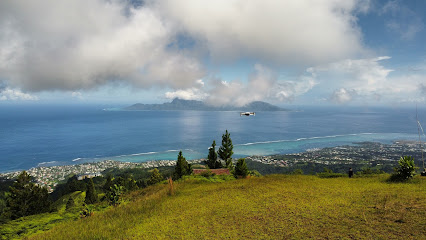
Direction de la Culture et du Patrimoine
Explore the rich cultural heritage of French Polynesia at the Direction de la Culture et du Patrimoine, a must-visit destination for every traveler.

PUNAVAI NUI
Explore the serene beauty of Punavai Nui, a hidden gem in Puna'auia, French Polynesia, offering tranquil landscapes and a taste of Polynesian culture.

Fortin de Punaauia
Discover the historical significance and breathtaking views at Fortin de Punaauia, a must-visit cultural landmark in the heart of French Polynesia.
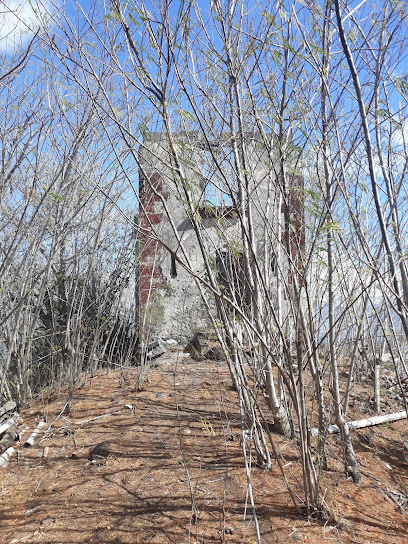
Unmissable attractions to see
Pā'ōfa'i Gardens
Explore the lush beauty of Pā'ōfa'i Gardens, a serene park in Papeete, French Polynesia, perfect for relaxation and family outings amidst stunning ocean views.

Museum of Tahiti and The Islands
Explore the cultural richness of Tahiti and its islands at the Museum of Tahiti and The Islands, where history and art come alive.

Musée de la Perle Robert Wan
Explore the exquisite world of pearls at Musée de la Perle Robert Wan, where beauty meets cultural heritage in Papeete, French Polynesia.

Te Mana O Te Moana
Experience the beauty of marine life and the importance of conservation at Te Mana O Te Moana in French Polynesia – a must-see for eco-conscious travelers.

Bougainville Park
Discover Bougainville Park: A vibrant urban oasis in Papeete, French Polynesia, perfect for relaxation, cultural experiences, and beautiful tropical scenery.
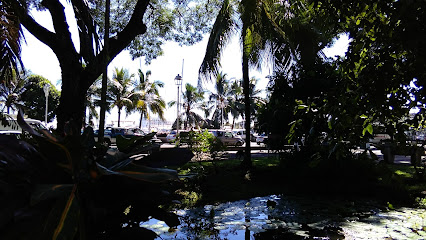
Tahiti Parapente
Experience the thrill of paragliding at Tahiti Parapente, where breathtaking views of French Polynesia await from above.

Plateau vaitavere
Explore the breathtaking hiking trails of Plateau Vaitavere in Puna'auia, a paradise for nature lovers in French Polynesia.

TAHITI ACTIVITIES CENTER
Unleash your adventurous spirit at Tahiti Activities Center, where thrilling boat tours and water skiing await in the stunning landscapes of French Polynesia.

Essential places to dine
Blue Banana
Experience authentic Polynesian flavors at Blue Banana in Puna'auia – where stunning ocean views meet exquisite cuisine.

La Casa Bianca
Experience authentic French Polynesian cuisine at La Casa Bianca in Puna'auia – where every meal is a celebration of flavor and culture.

L'Instant Présent
Experience the best of Polynesian cuisine with stunning ocean views at L'Instant Présent in Puna'auia.

Le Captain Bligh
Experience the vibrant flavors of French Polynesia at Le Captain Bligh – a culinary gem in Puna'auia with stunning ocean views.

Restaurant Le Red
Experience unforgettable culinary delights at Restaurant Le Red in Puna'auia, where every dish tells a story of French Polynesian heritage.

PAĪ Bistro
Experience culinary excellence at PAĪ Bistro in Puna'auia - where local flavors meet French flair in a stunning setting.

Taapuna Restaurant Tahiti
Discover authentic Polynesian flavors at Taapuna Restaurant, where ocean views meet exquisite cuisine in beautiful Puna'auia.
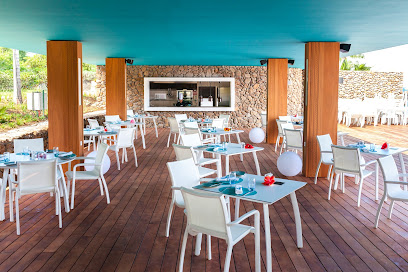
Sunset Restaurant
Discover culinary delights with breathtaking ocean views at Sunset Restaurant in Puna'auia - A true gem of French Polynesia.

Ma petite Bohème
Experience exquisite dining at Ma petite Bohème in Puna'auia, where traditional flavors meet stunning island views for an unforgettable meal.

Coco Restaurant
Experience exquisite haute French cuisine at Coco Restaurant in Puna'auia - where local flavors meet culinary artistry.

Markets, malls and hidden boutiques
Carrefour Punaauia
Discover a world of flavors and convenience at Carrefour Punaauia, your premier shopping destination in French Polynesia.

OPTIC TAMANU
Experience the essence of French Polynesia at OPTIC TAMANU, a vibrant shopping mall filled with local culture, unique shops, and delicious eateries.
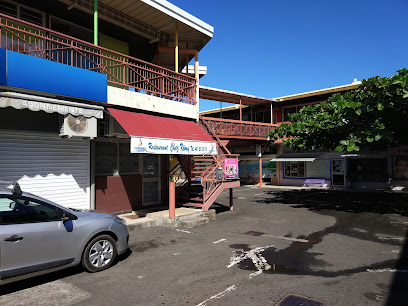
TAHITI PAS CHER - PUNAAUIA
Explore unique home goods and local crafts at Tahiti Pas Cher in Puna'auia, capturing the spirit of Polynesia in every piece.

La 5ème Dimension
Explore La 5ème Dimension in Puna'auia - a unique gift shop and wellness center offering collectibles, jewelry, and insights into Polynesian culture.

Tahitian Indoor Sports Punaauia
Experience the excitement of indoor sports in Puna'auia, where fun meets fitness in a vibrant community atmosphere.

Kelly Surf Tahiti
Discover the ultimate beach clothing experience at Kelly Surf Tahiti, where style meets the spirit of adventure in the heart of French Polynesia.

Hinaïa
Explore Hinaïa, a women's clothing store in Puna'auia, where local fashion meets contemporary style in the heart of French Polynesia.

Mon Joli Bazar Tahiti
Explore Mon Joli Bazar Tahiti for unique home goods, handcrafted treasures, and a taste of Tahitian artistry in Puna'auia.

Fenua Shopping
Explore Fenua Shopping for authentic Polynesian gifts and crafts in the heart of Puna'auia, capturing the essence of French Polynesia.

STRAWBERRY BOUTIQUE
Discover unique home goods and local artistry at Strawberry Boutique in Puna'auia, French Polynesia.

Essential bars & hidden hideouts
Poke bar II
Discover the vibrant flavors of Polynesian cuisine at Poke Bar II, where fresh ingredients meet welcoming hospitality in a stunning setting.

Tiki Bar
Experience the essence of paradise at Tiki Bar, where tropical cocktails meet stunning ocean views in French Polynesia.

Ginger Kitchen & Bar
Experience the vibrant flavors of French Polynesia at Ginger Kitchen & Bar, a must-visit restaurant in Puna'auia with a warm atmosphere and exquisite dishes.

Restaurant bar Chez Dani
Experience the vibrant flavors of French Polynesia at Restaurant Bar Chez Dani, where culinary excellence meets island hospitality.

Sunset Restaurant
Experience exquisite dining at Sunset Restaurant in Puna'auia, French Polynesia—where culinary delights meet stunning ocean views.
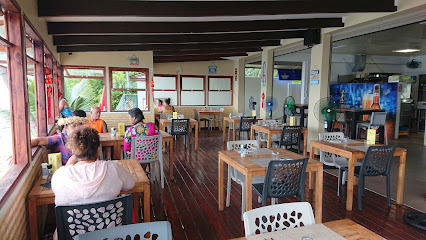
Vini Vini Snacking Punaauia
Experience the flavors of Tahiti at Vini Vini Snacking in Punaauia, where local delights meet an inviting atmosphere.

Ma petite Bohème
Experience the authentic flavors of Polynesia at Ma petite Bohème, a charming restaurant in Puna'auia offering delicious local cuisine and breathtaking views.

La Cantina Tahiti
Experience the best of Italian cuisine in a tropical paradise at La Cantina Tahiti, renowned for its fresh, delicious pizzas and welcoming atmosphere.
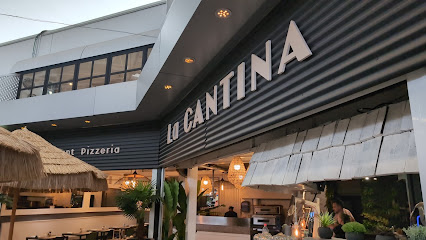
Heiva Lounge Bar
Experience the vibrant culture and exquisite flavors of Tahiti at Heiva Lounge Bar, the perfect blend of relaxation and tropical indulgence.

Prin's Bar Tahiti
Discover the vibrant atmosphere of Prin's Bar Tahiti, where tropical cocktails and stunning ocean views create unforgettable evenings in Puna'auia.

Local Phrases
-
- HelloIa ora na
[ya oh-rah nah] - GoodbyeNana
[nah-nah] - YesE
[eh] - NoAita
[eye-tah] - Please/You're welcomeMāuruuru
[mah-oo-roo-roo] - Thank youMauruuru
[mah-oo-roo-roo] - Excuse me/SorryPārahi
[pah-rah-hee] - How are you?E aha te huru?
[eh ah-hah teh hoo-roo] - Fine. And you?Maitai. Te oe?
[my-tie. teh oh-eh] - Do you speak English?E haere mai te reo Anglais?
[eh ha-eh-reh my teh ray-oh ahn-glay] - I don't understandAita i mohio
[eye-tah ee moh-hee-oh]
- HelloIa ora na
-
- I'd like to see the menu, pleaseE mea o te menu, maruuru
[eh may-ah oh teh may-noo, mah-roo-roo] - I don't eat meatAita i ai te kari
[eye-tah ee eye teh kah-ree] - Cheers!Manuia!
[mah-noo-ee-ah] - I would like to pay, pleaseE mea te moni, maruuru
[eh may-ah teh moh-nee, mah-roo-roo]
- I'd like to see the menu, pleaseE mea o te menu, maruuru
-
- Help!Aide!
[eye-day] - Go away!Haere i te piti!
[high-reh ee teh pee-tee] - Call the Police!E haere mai te Puro
[eh high-reh my teh poo-roh] - Call a doctor!E haere mai te taata rōroro!
[eh high-reh my teh tah-ah-tah roh-roh-roh] - I'm lostI tei rāpā
[ee teh-ee rah-pah] - I'm illI tei mate
[ee teh-ee mah-teh]
- Help!Aide!
-
- I'd like to buy...E mea te hana...
[eh may-ah teh hah-nah] - I'm just lookingE tei noa
[eh teh-ee no-ah] - How much is it?E hia?
[eh hee-ah] - That's too expensiveTe pahuru teitei
[teh pah-hoo-roo tay-ee-tay] - Can you lower the price?E haapiti i te moni?
[eh hah-ah-pee-tee ee teh moh-nee]
- I'd like to buy...E mea te hana...
-
- What time is it?E hia te ora?
[eh hee-ah teh oh-rah] - It's one o'clockE tahi te ora
[eh tah-hee teh oh-rah] - Half past (10)E toru maha (tekau)
[eh toh-roo mah-hah (teh-kow)] - MorningPoipoi
[poy-poy] - AfternoonAtorahi
[ah-toh-rah-hee] - EveningPō
[poh] - YesterdayInanahi
[ee-nah-nah-hee] - TodayAujourd'hui
[oh-zhoor-dwee] - TomorrowApō
[ah-poh] - 1Tahi
[tah-hee] - 2Rua
[roo-ah] - 3Toru
[toh-roo] - 4Wha
[fah] - 5Rima
[ree-mah] - 6Ono
[oh-noh] - 7Whitu
[fee-too] - 8Waru
[wah-roo] - 9Iwa
[ee-wah] - 10Tekau
[teh-kow]
- What time is it?E hia te ora?
-
- Where's a/the...?I hea te...?
[ee heh-ah teh] - What's the address?He aha te tuhinga?
[heh ah-hah teh too-heen-gah] - Can you show me (on the map)?E hiki i te tāpiri mai ia i au (i te mahere)?
[eh hee-kee ee teh tah-pee-ree my ee-ah ee oh (ee teh mah-heh-reh)] - When's the next (bus)?Ahea te hōu?
[ah-heh-ah teh hoh-oo] - A ticket (to ....)He tiki (ki ...)
[heh tee-kee (kee)]
- Where's a/the...?I hea te...?
History of Punaauia
-
Punaauia, like much of Tahiti, is rooted in the ancient Polynesian migration patterns. The first settlers arrived over a thousand years ago, bringing with them rich traditions and practices that laid the foundation for the cultural tapestry of the region. Archaeological evidence suggests that this area was inhabited by these early Polynesian navigators who established agricultural practices and fishing communities.
-
In the late 18th century, European explorers began to arrive in Tahiti, marking a significant turning point in Punaauia's history. Notably, Captain James Cook visited the island in 1769, leading to increased European interest in the region. This period brought both trade and cultural exchange, but also the onset of colonial influences that would reshape local traditions and society.
-
The arrival of missionaries in the early 19th century had a profound impact on Punaauia's culture. The London Missionary Society established a presence in the area, aiming to convert the local population to Christianity. This led to significant changes in social structures, religious practices, and education, as traditional beliefs were often replaced or blended with new Christian values.
-
During World War II, Tahiti's strategic location in the South Pacific made it a significant military base for Allied forces. Punaauia, with its coastal access, was utilized for military logistics and operations. The presence of troops and infrastructure development during this period left a lasting legacy on the region and contributed to its post-war growth and modernization.
-
In the latter half of the 20th century, Punaauia evolved into a popular destination for tourists drawn to its beautiful beaches and cultural attractions. The development of hotels, restaurants, and recreational facilities transformed the neighborhood, making it a vibrant hub for both locals and visitors. This shift toward tourism has greatly influenced the local economy and helped preserve some aspects of the rich Tahitian culture.
Punaauia Essentials
-
Punaauia is located approximately 10 kilometers west of Papeete, the capital of Tahiti. The most common way to reach Punaauia is by car or taxi, which takes about 20 minutes from Papeete. Public buses also connect Papeete to Punaauia, specifically the bus line No. 1, which operates regularly throughout the day. If you are arriving at Faa'a International Airport, you can take a taxi directly to Punaauia, which is roughly a 15-minute drive.
-
Punaauia is relatively small, and many areas can be explored on foot. For longer distances, local buses are available, with routes connecting to Papeete and other neighborhoods. Taxis are also a convenient option, though more expensive. Renting a bicycle or a scooter can be a fun way to explore the coastal road and scenic views. Car rentals are available for those wishing to explore the island more extensively.
-
Punaauia is considered a safe neighborhood for tourists. However, standard precautions should be taken. Avoid walking alone at night in less populated areas, especially near the beach. While crime targeting tourists is relatively low, areas around bus stops and markets can be crowded, so keep an eye on your belongings. Always be cautious in unfamiliar areas and trust your instincts.
-
In case of emergencies, dial 18 for police or 15 for ambulance services in French Polynesia. The local hospital, Hôpital de Punaauia, is equipped to handle most medical situations. It is advisable to have travel insurance that covers emergencies. For minor health issues, there are pharmacies in the area where you can purchase basic medications.
-
Fashion: Do dress modestly when visiting local communities, and swimwear should only be worn at beaches. Religion: Do respect local customs, especially at religious sites; remove hats and sunglasses when entering. Public Transport: Do give your seat to elderly passengers. Don’t eat or drink on public transport. Greetings: Do greet with a friendly 'Ia ora na' (hello) and a smile. Eating & Drinking: Do try local dishes like poisson cru. Don’t refuse food offerings, as this can be considered impolite.
-
To experience Punaauia like a local, visit the open-air markets for fresh produce and local crafts. Engage with local vendors, as they often enjoy sharing stories about their goods. Enjoy the natural beauty by hiking the trails at the nearby Mount Aorai. For a unique experience, consider attending a local dance performance or cultural event, which can provide deeper insight into Tahitian traditions.
Nearby Cities to Punaauia
-
Things To Do in Tahiti
-
Things To Do in Moorea
-
Things To Do in Tetiaroa
-
Things To Do in Huahine
-
Things To Do in Raiatea
-
Things To Do in Bora Bora
-
Things To Do in Maupiti
-
Things To Do in Rangiroa
-
Things To Do in Matavera
-
Things To Do in Muri
-
Things To Do in Ngatangiia
-
Things To Do in Avarua
-
Things To Do in Takitumu
-
Things To Do in Avatiu
-
Things To Do in Nikao





